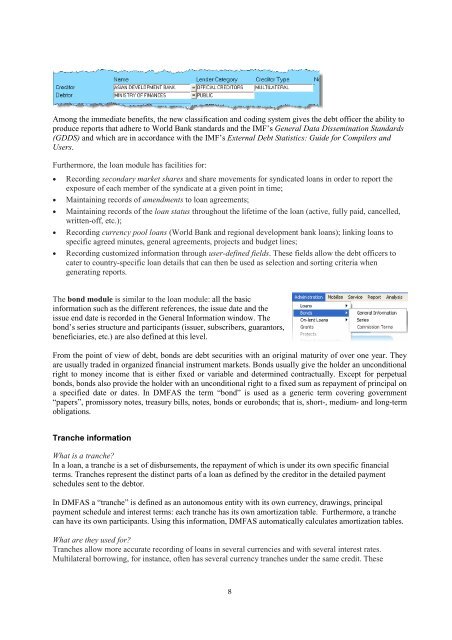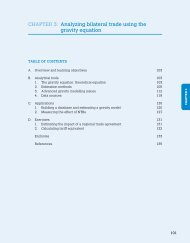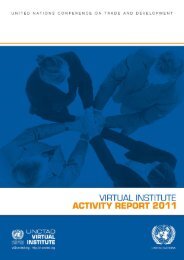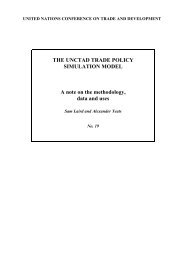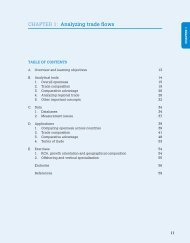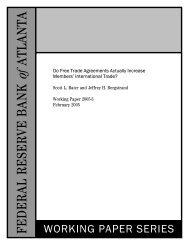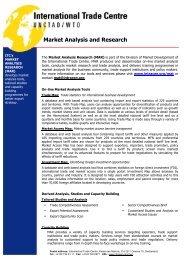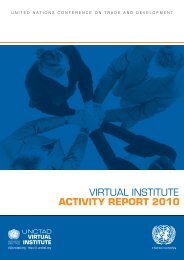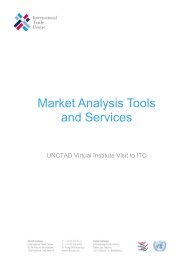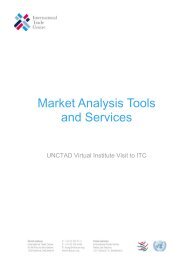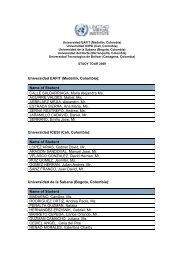UNCTAD's Debt Management and Financial Analysis System (DMFAS
UNCTAD's Debt Management and Financial Analysis System (DMFAS
UNCTAD's Debt Management and Financial Analysis System (DMFAS
Create successful ePaper yourself
Turn your PDF publications into a flip-book with our unique Google optimized e-Paper software.
Among the immediate benefits, the new classification <strong>and</strong> coding system gives the debt officer the ability toproduce reports that adhere to World Bank st<strong>and</strong>ards <strong>and</strong> the IMF’s General Data Dissemination St<strong>and</strong>ards(GDDS) <strong>and</strong> which are in accordance with the IMF’s External <strong>Debt</strong> Statistics: Guide for Compilers <strong>and</strong>Users.Furthermore, the loan module has facilities for:• Recording secondary market shares <strong>and</strong> share movements for syndicated loans in order to report theexposure of each member of the syndicate at a given point in time;• Maintaining records of amendments to loan agreements;• Maintaining records of the loan status throughout the lifetime of the loan (active, fully paid, cancelled,written-off, etc.);• Recording currency pool loans (World Bank <strong>and</strong> regional development bank loans); linking loans tospecific agreed minutes, general agreements, projects <strong>and</strong> budget lines;• Recording customized information through user-defined fields. These fields allow the debt officers tocater to country-specific loan details that can then be used as selection <strong>and</strong> sorting criteria whengenerating reports.The bond module is similar to the loan module: all the basicinformation such as the different references, the issue date <strong>and</strong> theissue end date is recorded in the General Information window. Thebond’s series structure <strong>and</strong> participants (issuer, subscribers, guarantors,beneficiaries, etc.) are also defined at this level.From the point of view of debt, bonds are debt securities with an original maturity of over one year. Theyare usually traded in organized financial instrument markets. Bonds usually give the holder an unconditionalright to money income that is either fixed or variable <strong>and</strong> determined contractually. Except for perpetualbonds, bonds also provide the holder with an unconditional right to a fixed sum as repayment of principal ona specified date or dates. In <strong>DMFAS</strong> the term “bond” is used as a generic term covering government“papers”, promissory notes, treasury bills, notes, bonds or eurobonds; that is, short-, medium- <strong>and</strong> long-termobligations.Tranche informationWhat is a tranche?In a loan, a tranche is a set of disbursements, the repayment of which is under its own specific financialterms. Tranches represent the distinct parts of a loan as defined by the creditor in the detailed paymentschedules sent to the debtor.In <strong>DMFAS</strong> a “tranche” is defined as an autonomous entity with its own currency, drawings, principalpayment schedule <strong>and</strong> interest terms: each tranche has its own amortization table. Furthermore, a tranchecan have its own participants. Using this information, <strong>DMFAS</strong> automatically calculates amortization tables.What are they used for?Tranches allow more accurate recording of loans in several currencies <strong>and</strong> with several interest rates.Multilateral borrowing, for instance, often has several currency tranches under the same credit. These8


